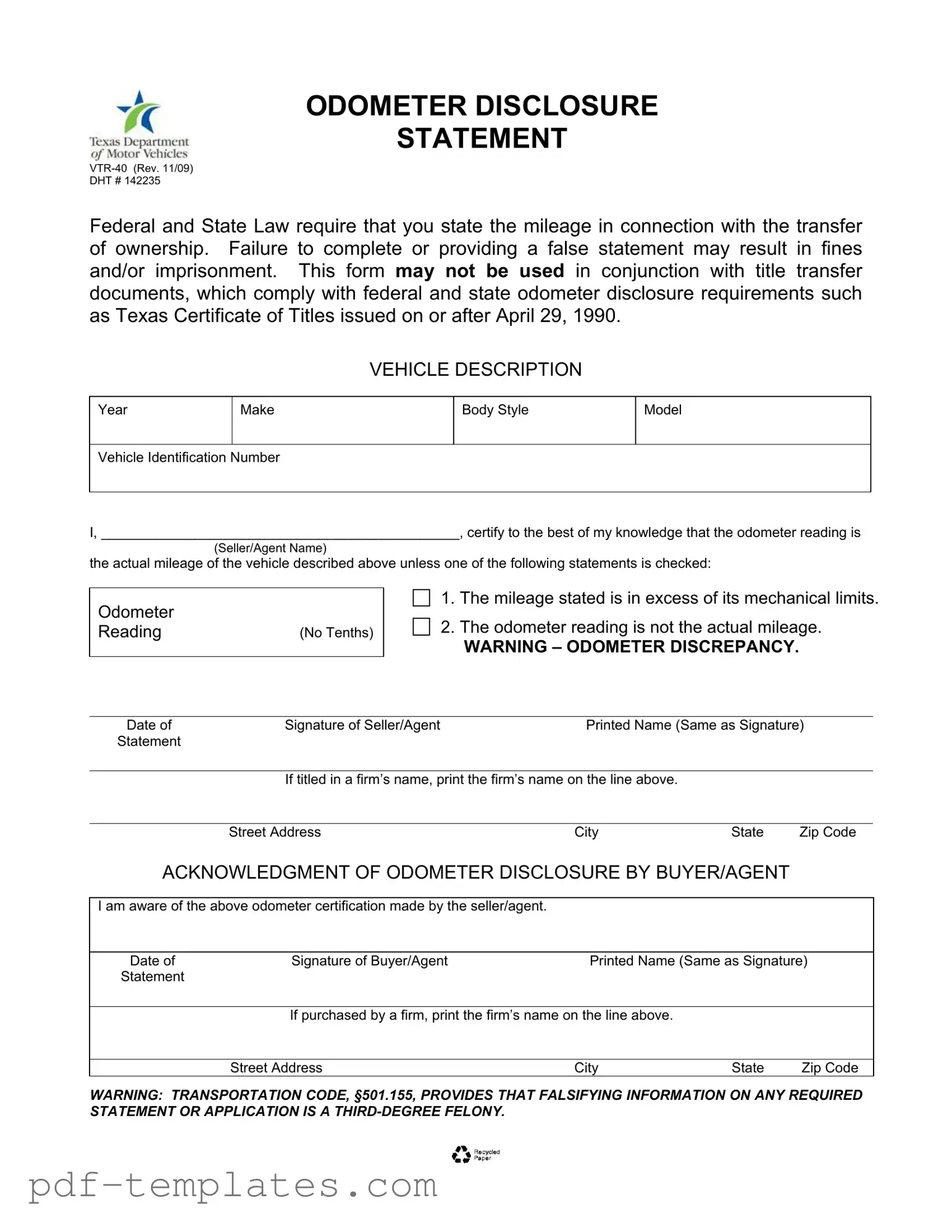The Texas Vehicle Title Application form is similar to the Texas Odometer Statement in that both documents are essential for transferring vehicle ownership. The Vehicle Title Application requires information about the vehicle, including its make, model, and VIN, just like the Odometer Statement. Both forms also require the seller's certification regarding the accuracy of the information provided, ensuring that the buyer receives a clear and honest account of the vehicle's history.
The California Notary Acknowledgement form is essential for validating signatures on legal documents, ensuring that individuals acknowledge their actions under the supervision of a Notary Public. This process not only verifies the identity of the signer but also confirms that the signature was made voluntarily. For those looking for resources related to various forms, including this one, All California Forms provides helpful access to necessary documentation.
The Bill of Sale serves a similar purpose to the Texas Odometer Statement by documenting the sale of a vehicle. This document outlines the terms of the sale, including the purchase price and the vehicle's details. Like the Odometer Statement, the Bill of Sale often includes a declaration from the seller about the vehicle's condition and mileage, providing legal protection for both parties involved in the transaction.
The Application for Duplicate Title is another document that shares similarities with the Texas Odometer Statement. When a vehicle owner loses their title, this application allows them to obtain a replacement. Both documents require accurate information about the vehicle, and the owner must certify that the details provided are correct. This helps to prevent fraud and ensures that the vehicle's history remains clear.
The Vehicle Registration form is also akin to the Texas Odometer Statement. This form is necessary for registering a vehicle with the state and requires similar information, such as the vehicle's make, model, and VIN. Additionally, both documents emphasize the importance of providing accurate mileage information, which is crucial for determining the vehicle's value and history.
The Notice of Transfer and Release of Liability is another document that complements the Texas Odometer Statement. When a vehicle is sold, this notice informs the state that the seller is no longer responsible for the vehicle. It requires the seller to provide details about the vehicle and the sale, including the odometer reading at the time of transfer. This helps protect the seller from any future liabilities related to the vehicle.
Lastly, the Title Transfer form is similar to the Texas Odometer Statement as it is used during the sale of a vehicle to officially change ownership. This form includes details about the vehicle and requires the seller to certify the accuracy of the information, including the odometer reading. Both documents play a crucial role in ensuring that the transfer of ownership is conducted legally and transparently.
